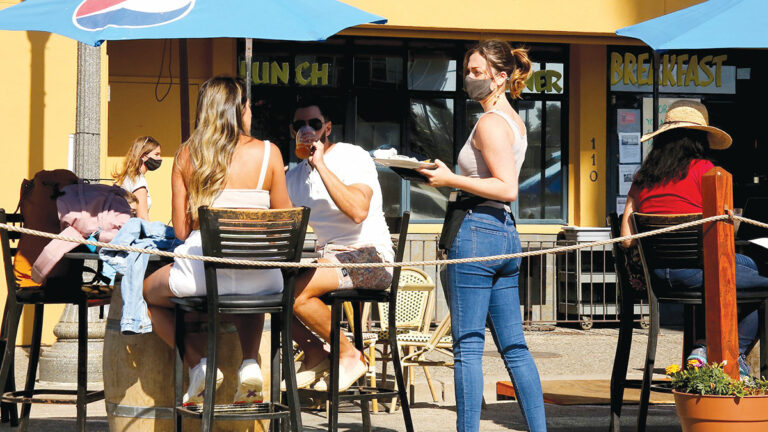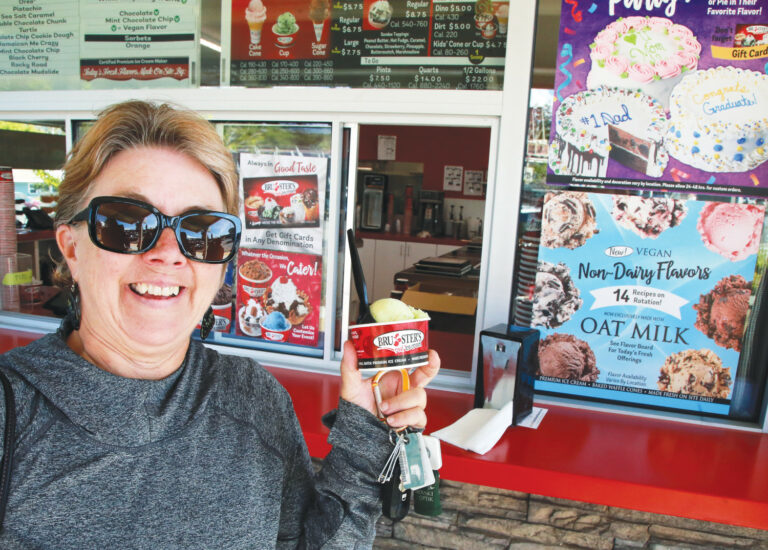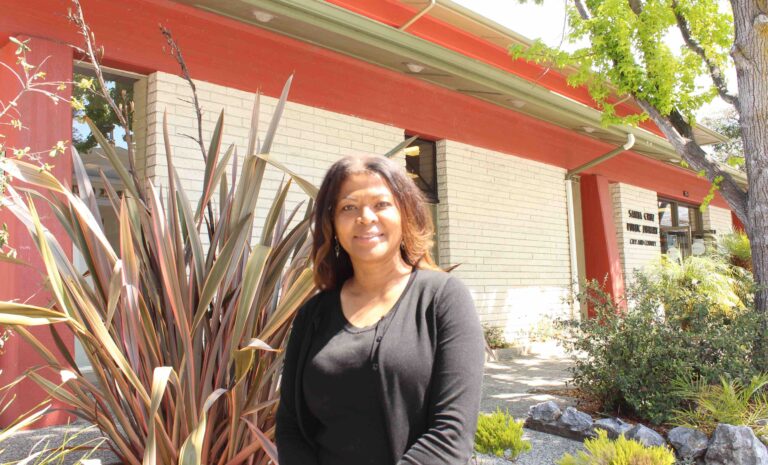It’s a crisp, sunny Tuesday afternoon and the Monterey Bay F.C. Union—the Central Coast’s new professional soccer team—is in the middle of an intense passing drill that has players riled up, yelling for the ball and fighting for position on the pitch.
Among them are midfielder Adrian Rebollar and forward Walmer Martínez, the latest pair of Santa Cruz County players to make it to the professional ranks.
Martínez, a 23-year-old Santa Cruz native, was the club’s first-ever signing. He says it’s an honor to be such a big part of the team’s historic inaugural season back at his old college stomping grounds of Cal State Monterey Bay (CSUMB).
“I’ll grow up and be able to say that I was the [first] signing,” he says. “It makes me the happiest guy, because it’s on my home turf. I grew up playing here in this area.”
Rebollar, a 22-year-old from Watsonville, was the second Santa Cruz County native and CSUMB player to join the Union. After signing with the team, the first thing he thought about were the numerous early morning workouts and solo training sessions that helped him get to his first pro deal.
“I want to say it was like a relief, but at the same time I was proud of myself,” he says. “For the most part I was proud I reached what I wanted to do and now I’m living my dream.”
The United Soccer League (USL) announced last year in February that Monterey Bay Football Club was its newest member of the USL Championship—which is one division below Major League Soccer, the top league in the U.S.
Both Martínez and Rebollar will be sharing their dreams with their respective communities on Saturday when Monterey Bay F.C. will debut the newly remodeled Cardinale Stadium at the CSUMB campus in the team’s first-ever home match. They play the Las Vegas Lights F.C. at 7pm.
The stadium was once home to the Fort Ord Warriors, a former semi-pro football team comprised of military service members, and has served as the site of CSUMB graduations. But after an $11 million infusion from Monterey Bay F.C., the 6,000-seat stadium will be unrecognizable to most.
“Everyone’s so excited, especially for me,” Rebollar says. “I’m very proud to represent the 831 community. I’m big about where I’m from, Watsonville. I hope I get to see as many people as I can, because we’re playing for our fans and our community ultimately.”
Different Paths
Rebollar and Martínez have played together since they were in their teens. Martínez went to Soquel High School and Rebollar attended Watsonville High School, but neither played for their respective schools. Instead, they opted to play for the Santa Cruz Breakers Academy, a local competitive travel squad.
Their friendship developed while at CSUMB, and their games did, too.
Martínez starred at Cabrillo College before transferring to CSUMB, where he finished second all-time in assists (16) and fifth in goals (17). In his senior season in 2019, Martínez had the second-best attacking season in Otters’ men’s soccer history, recording 13 goals and 33 points.
Rebollar joined CSUMB in 2017, appearing in 63 matches—60 starts—in four seasons. He notched 16 goals and 14 assists with the Otters, including seven game-winning scores.
Rebollar scored a career-high seven goals in 1,394 minutes in 2021. He recorded a career-high eight assists in 2019, which was good for the third-best season mark in the program’s history.
Martinez’s true breakout year would be 2021. He not only scored his first pro deal, signing with the Hartford Athletic—the only pro soccer team in Connecticut—of the USL Championship, but he was also selected for the El Salvador National Team. He made his international debut for La Selecta in a 7-0 win against the U.S. Virgin Islands on June 5, 2021.
He scored his first international goal three days later in a 3-0 victory against Antigua and Barbuda. Martínez has gone on to make 16 appearances for the side while recording two goals.
Martínez played at the 2021 Concacaf Gold Cup and saw action in the final stage of FIFA 2022 World Cup Qualifying, competing against the United States, Mexico and Canada.
When Monterey Bay F.C. announced they had acquired Martínez via transfer, club president Mike DiGiulio said that his homecoming signified “the beginning of the Union as we continue to bring athletes here to make Monterey Bay their home.”
Rebollar’s path to the pros was a bit different. After graduating from CSUMB in 2021, he was among dozens of prospects that trained with Monterey Bay F.C. throughout the offseason and into camp. The team announced his signing a day before its inaugural match on March 12. Union lost 4-2 to Phoenix Rising F.C., but Rebollar scored his first professional goal.
“From what I’ve seen, it really doesn’t matter what path you take,” Rebollar says. “It’s all about what you do in the path that you go through. As long as you put the work in, you kind of set yourself up for success.”
Fitting In
Monterey Bay F.C. coach Frank Yallop says both Martínez and Rebollar have soaked up everything around them over the past two months.
“They are really, really great pros,” he says. “They’re brand new to that, but they work hard, they want to learn, they’re everything I like in young players—and the greatest news is that they’re local guys, which is fantastic, too.”
Yallop says that Rebollar has done well since earning his way onto the team; he says the young forward is full of energy and always on the go.
“[Rebollar’s] got a ways to go with his final pass and stuff we’re talking to him about, but you can’t get a better kid for attitude,” he says.
Along with the one goal, Rebollar has a 68.6% passing accuracy, while on defense he’s had three interceptions and one tackle.
Yallop says he’s looking forward to developing this group, and Martínez has been a big part of playing well.
Martínez has yet to score, but he has an outstanding 80.5% passing accuracy. On defense, he has eight clearances, six tackles won, four interceptions and two blocks.
“I just love his energy, I love the way he plays,” Yallop says about Martínez. “I think he’s got a bright future. We’ve had a tough start to the season, but it’s kind of expected with a lot of away games in a row, which is never easy. I don’t care who you are.”
Rebollar knows it’s rare to transition from the collegiate level to the pros while staying close to home. He says it’s helped him ease into the next level, taking away some of the nervousness of having to move away.
“I just think that’s helped me develop a little quicker to the speed of play and kind of the culture in the professional environment,” he says.
Both have had the opportunity to meet people on the team who come from different cultures. Rebollar says he is learning new traditions from his teammates and has already picked up some Japanese from Jiro Barriga Toyama, who is from Japan. Seku Conneh is from Liberia, Robbie Crawford is from Scotland, and both Simon Dawkins and Sam Gleadle are from England.
Martínez says the key is figuring out how to unite players from all of these backgrounds to create a bond, a Union.
“We come here and we unite, we share those stories and we become a family,” he says.
Martínez plans to have a big barbeque in the near future and is hoping everyone brings a traditional dish for an international-style potluck. Rebollar has already shared his mom’s homemade food with his teammates, and says he’s also looking forward to taking his teammates to the taco trucks in his hometown.
“It’s all about learning, being very open to what other people are used to,” he says. “Getting out of your comfort zone as well and trying something new.”
He’s mostly thrilled to learn from his comrades, and as one of the youngest players on the team, he keeps an open mind.
“I want the criticism. I enjoy when my teammates and my coaches tell me if I’m doing something wrong and what I can do better,” he says. “It can be frustrating sometimes having someone tell you something, but at the end of the day they’re looking out for me and they want me to get better. I appreciate that.”
Bright Future
Monterey Bay F.C. is heading into Saturday’s game with a 1-6 record. Martínez says it’s been a developing year for the new club and he believes they’re going in the right direction.
“I feel like the team is coming together, the facilities are coming together and we’re starting to see the bigger picture,” Martínez says.
In many ways, Monterey Bay F.C. is starting from scratch. Along with rebuilding the stadium, the club had to rebuild its roster. Coach Yallop says most USL Championship squads use their academies to recruit local players, but because they’re a brand new club, they don’t have that option.
Yallop played 13 years in England along with stints in Major League Soccer and the Canadian national team. He also spent 13 years as a head coach in the MLS, including two championship seasons with the San Jose Earthquakes. Most recently, Yallop has been integral to the growth of the USL Championship, serving in coaching and leadership positions with Phoenix Rising F.C., Fresno F.C. and Las Vegas Lights F.C.
Yallop says it takes years to build a second team or a youth club, especially one that could serve as a pipeline for players in the future. Monterey Bay F.C. doesn’t have anything planned for this season, but the coaching staff is working on helping players take that path to the pro level. Assistant coach Ramiro Corrales, a Salinas native and former Earthquakes player, has already tapped into the pool of talented players in the Salinas area.
“My mind is on that—really capture this area and have a conveyor belt to the first team playing in the stadium, which will be fantastic for any sort of 8-to-10-year-old right now,” Corrales says. “If we get a system in place, then he could end up like a Walmer or Adrian.”
Monterey Bay F.C. plays Saturday, May 7, 7pm. Cardinale Stadium, CSU Monterey Bay, Seaside. montereybayfc.com.























